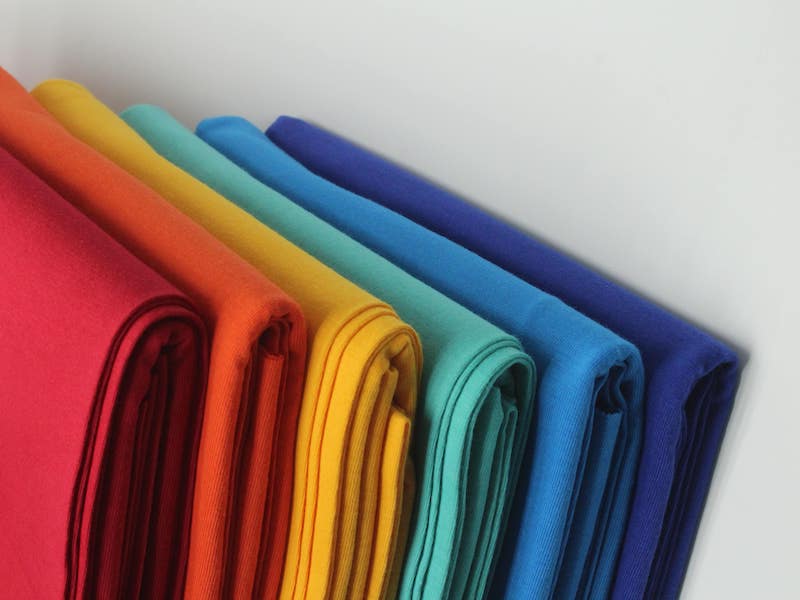You must keep up with the most recent styles to be current and competitive in the international apparel market. The globe has been awakened to the lively African culture through celebrities like Beyoncé, Rihanna, Kanye West, and others. And now, it has appeared in the main rooms of significant homes worldwide.
You must draw motivation from these celebrities and incorporate different types of African prints into your line to appeal to young and generation Z buyers.
For decades, individuals have sported various types of African prints worldwide, yet we frequently do not know where they came from. They stand out from many other patterns thanks to their vivid hues and vector illustrations. To honour these prints, you need to be more knowledgeable about them as a fashionista. If you begin your promotional efforts for these pieces by outlining their backstories, your series will go fast.
Different Types of African Print Textiles: What Is It?
African apparel, accessories, and other things are frequently created using 100% cotton textiles, which are applied to create different types of African print cloth. It is also known as Dutch Wax, Kitenge, Chitenge, and Ankara cloth.
Kitenge cloth comes in ‘half’ pieces that are 6 yards long instead of the whole piece’s 12 yards. The fabric’s breadth differs depending on the supplier; it is typically 45 to 48 inches.
Making the cloth is known as batik, a wax-resist coloring procedure and age-old fine art that has its roots in Indonesia. The print’s colors and pattern are the same on the front and back sides of the textile. The cotton fabric chosen and the production procedures employed to affect the fabric’s value.
The Background of Kitenge/Ankara Textile
Batik textiles were found in Indonesia during the Dutch colonization, and traders from that nation carried examples returning to their home country. Dutch fabric producers created methods for machine-printing cloth in large quantities and began making less expensive counterfeit batik patterns.
The traditional batik textiles were chosen in Indonesia, where these innovative materials were not well-liked. Nevertheless, they were favourably welcomed when they were introduced to West Africa in the 1880s.
While fighting in Indonesia, warriors from West Africa returned home with batik textiles, which helped to popularize the fabrics. Before production began in African nations, the cloth was made for many decades by various European producers, notably the British and Dutch.
Asia has experienced a boom in the production of textiles in consecutive years (mainly in India and China). Unlike fabrics made in West Africa, these materials are of poorer value and cost.
In African nations like Ghana, classic batik-making methods are still used. Exquisite textiles are handcrafted in tiny, independently owned businesses using no automation. Before imprinting the wax onto the cloth, the patterns are first carved onto spongy pieces.
Because of their well-known, more profound messages, the textiles used by African women are occasionally employed as a form of non-verbal expression. Each type of African print’s colors and motifs can represent a nation, a union, or the user’s social standing.

The tales and personal significance underlying the textiles are created by the women who use them after they are developed, manufactured, and marketed to marketplaces, notably in West Africa. The maker receives this data and offers the cloth a unique selling point.
For instance, Ghana’s famous “Speed Bird” poster features several birds moving rigidly. This design implies that because wealth can readily go, you could be “rich now, destitute later.”
Nsu Bura, an Akan term for “water well,” is another widely-liked type of African print in Ghana. The small spots in the pattern stand in for the water waves that can be seen whenever it is drawn from a deep well.
It serves as a reminder that your actions, whether positive or negative, affect people around you. Because the circular designs resemble vintage vinyl albums, this print is often called the “Record Disc” in Nigeria.
How Are Different Types of African Print Created?
African wax pattern cloth is produced using the following basic procedures:
Printing Machinery is used to imprint liquefied, melted wax on the fabric’s back and front.
The fabric is submerged in an azure dyeing process (the dye doesn’t adhere to the wax-coated cloth).
● Machinery may crack wax to produce various effects, including marbled and bubbling.
● Printing presses enhance the pattern with two or three colors.
● Eliminating the wax, which is recovered and repurposed, the fabric is cleaned (boiled).
● The material may get a variety of treatments.
● By manually block stamping a portion of the pattern onto the cloth, the producer can add one of the colors.
Because of the various color hues and unpredictable breaking appearance, every sample of the exact intricate designs may appear somewhat unique.

African Textile Patterns and Ideas for Prints
African marketplaces have various types of African print cloth patterns and fashions that update constantly. It can be challenging to repurchase the same cloth if you do so online or from an actual store.
Floral, trees, animals (especially birds), plants, African tribal print cloth, and geometrical forms are some types of African print textile patterns.
Popular Types of African Print Textiles
1. Ukara-Ekpe
This material is a symbol of reverence. In the African tribes, it was only used by noblemen and older women. Each hue, whether blue, green, or red, represents a certain feeling or period of life. The motifs on the cloth, which comprised moons, harvests, birds, vector illustrations, pieces of metal, and costumes, were made by male Nsibidi craftsmen.
Abakaliki, in the Ebonyi state of southeast Nigeria near the Cross River, is where this cloth originated. The first tribe to use this pattern was the Ekpe culture, and historians have discovered remnants of this cloth as far south as southwestern Cameroon.
2. Adire
Adire is Yoruba for “knot and color.” According to archaeologists, this method of blue coloring dated back to the eleventh century and was created in the Dogon kingdom of Mali (West Africa). Yoruba women in southwest Nigeria are making these hand-woven cotton fabrics. These textiles were mainly supplied by Abeokuta, Ibadan, and Osogbo (Yorubaland) to customers from around West Africa.
The Europeans added synthetic blue and bicarbonate of soda to cloth printing in the 1930s as this art developed through time. Nigerian artists like Nike Davies-Okundaye, Amaka Osakwe, and Duro Olowu brought back this fading craft. The Adire art is patronized by Osakwe’s label Maki-Oh. Politicians like Lupita Nyong’o and Michelle Obama have endorsed this type of African print.
3. Isi-Agu
In eastern Nigeria, the Igbo folks make this luxurious cloth from velvet or cotton. The royal people wear it when there are significant events, like weddings. Igbo for “lion’s head” is Isi-Agu. Sweater shirts with either long or short sleeves are made from this material. It was customarily donned by those who rose to the position of tribe leader. This robe-style clothing is worn in conjunction with a red fez headdress to demonstrate the chieftain’s authority. Additionally, an Igbo leopard hat is paired with it.
This gown is equipped with gold trim to demonstrate the user’s supremacy. Igbo women now use these unique types of African print textiles in various ways for significant events like weddings and childbirth.
4. Barkcloth
The glory of Ugandan tribes is a cloth created from plants in the Moraceae tribe. This kind of fabric is made from the bark of plants like Artocarpus Altilis, Broussonetia Papyrifera, and Ficus Natalensis.
5. Shweshwe
Different geometrical motifs are used in this type of African print. Its ties to King Moshoeshoe I of Lesotho are the reason for its title. The imprinted and colored cotton cloth is still in demand nowadays all over the world, and many contemporary fashion firms use it in their designs.
6. Kikoy
These textiles were made from cotton thread by tribes in Tanzania and Kenya. Women’s striped gowns, wrappers, clothes, beach towels, sofa coverings, hat wraps, wraparounds, home decor, shawls, dresses, and tablecloths have all been produced with this material.




















